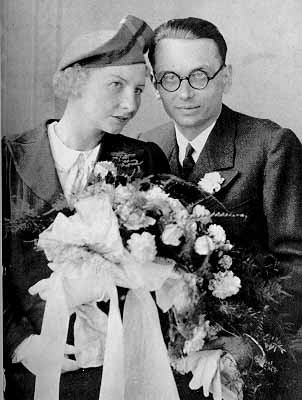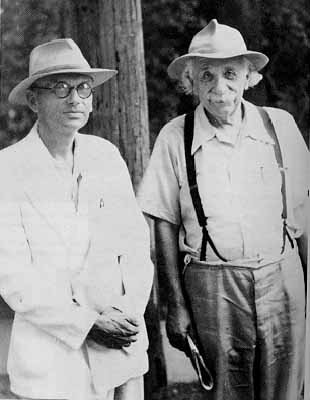<Back to Index>
- Mathematician Alfred Tarski, 1901
- Mathematician Kurt Friedrich Gödel, 1906
PAGE SPONSOR
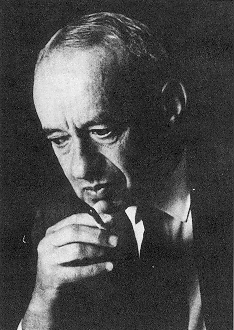
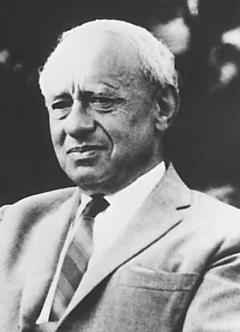
Alfred Tarski (January 14, 1901 – October 26, 1983) was a Polish logician and mathematician. Educated at the University of Warsaw and a member of the Lwow - Warsaw School of Logic and the Warsaw School of Mathematics and philosophy, he emigrated to the U.S.A. in 1939, and taught and carried out research in mathematics at the University of California, Berkeley, from 1942 until his death.
A prolific author best known for his work on model theory, metamathematics and algebraic logic, he also contributed to abstract algebra, topology, geometry, measure theory, mathematical logic, set theory and analytic philosophy.
His biographers Anita and Solomon Feferman state that, "Along with his contemporary, Kurt Gödel, he changed the face of logic in the twentieth century, especially through his work on the concept of truth and the theory of models."
Alfred Tarski was born Alfred Teitelbaum (Polish spelling: "Tajtelbaum"), to parents who were Polish Jews in comfortable circumstances. He first manifested his mathematical abilities while in secondary school, at Warsaw's Szkoła Mazowiecka. Nevertheless, he entered the University of Warsaw in 1918 intending to study biology.
After Poland regained independence in 1918, Warsaw University came under the leadership of Jan Łukasiewicz, Stanisław Leśniewski and Wacław Sierpiński and quickly became a world leading research institution in logic, foundational mathematics and the philosophy of mathematics. Leśniewski recognized Tarski's potential as a mathematician and encouraged him to abandon biology. Henceforth Tarski attended courses taught by Łukasiewicz, Sierpiński, Stefan Mazurkiewicz and Tadeusz Kotarbiński, and became the only person ever to complete a doctorate under Leśniewski's supervision. Tarski and Leśniewski soon grew cool to each other. However, in later life, Tarski reserved his warmest praise for Kotarbiński, as was mutual.
In 1923, Alfred Teitelbaum and his brother Wacław changed their surname to "Tarski", a name they invented because it sounded more Polish, was simple to spell and pronounce, and seemed unused. (Years later, Alfred met another Alfred Tarski in northern California.) The Tarski brothers also converted to Roman Catholicism, Poland's dominant religion. Alfred did so even though he was an avowed atheist. Tarski was a Polish nationalist who saw himself as a Pole and wished to be fully accepted as such - later, in America, he spoke Polish at home.
After becoming the youngest person ever to complete a doctorate at Warsaw University, Tarski taught logic at the Polish Pedagogical Institute, mathematics and logic at the University, and served as Łukasiewicz's assistant. Because these positions were poorly paid, Tarski also taught mathematics at a Warsaw secondary school; before World War II, it was not uncommon for European intellectuals of research caliber to teach high school. Hence between 1923 and his departure for the United States in 1939, Tarski not only wrote several textbooks and many papers, a number of them ground breaking, but also did so while supporting himself primarily by teaching high school mathematics. In 1929 Tarski married a fellow teacher Maria Witkowska, a Pole of Catholic background. She had worked as a courier for the army during Poland's fight for independence. They had two children, a son Jan who became a physicist, and a daughter Ina, who married the mathematician Andrzej Ehrenfeucht.
Tarski applied for a chair of philosophy at Lwów University, but on Bertrand Russell's recommendation it was awarded to Leon Chwistek. In 1930, Tarski visited the University of Vienna, lectured to Karl Menger's colloquium, and met Kurt Gödel. Thanks to a fellowship, he was able to return to Vienna during the first half of 1935 to work with Menger's research group. From Vienna he traveled to Paris to present his ideas on truth at the first meeting of the Unity of Science movement, an outgrowth of the Vienna Circle. In 1937, Tarski applied for a chair at Poznań University but the chair was abolished. Tarski's ties to the Unity of Science movement saved his life, because they resulted in his being invited to address the Unity of Science Congress held in September 1939 at Harvard University. Thus he left Poland in August 1939, on the last ship to sail from Poland for the United States before the German invasion of Poland and the outbreak of World War II. Tarski left reluctantly, because Leśniewski had died a few months before, creating a vacancy which Tarski hoped to fill. He was so oblivious to the Nazi threat that he left his wife and children in Warsaw; he did not see them again until 1946. During the war, nearly all his extended family died at the hands of the German occupying authorities.
Once in the United States, Tarski held a number of temporary teaching and research positions: Harvard University (1939), City College of New York (1940), and thanks to a Guggenheim Fellowship, the Institute for Advanced Study in Princeton (1942), where he again met Gödel. In 1942, Tarski joined the Mathematics Department at the University of California, Berkeley, where he spent the rest of his career. Tarski became an American citizen in 1945. Although emeritus from 1968, he taught until 1973 and supervised Ph.D. candidates until his death. At Berkeley, Tarski acquired a reputation as an awesome and demanding teacher, a fact noted by many observers:
His seminars at Berkeley fast became a power house of logic. His students, many of them now distinguished mathematicians, recall the awesome energy with which he would coax and cajole their best work out of them, always demanding the highest standards of clarity and precision.
Tarski was extroverted, quick - witted, strong - willed, energetic, and sharp - tongued. He preferred his research to be collaborative — sometimes working all night with a colleague — and was very fastidious about priority.
A charismatic leader and teacher, known for his brilliantly precise yet suspenseful expository style, Tarski had intimidatingly high standards for students, but at the same time he could be very encouraging, and particularly so to women — in contrast to the general trend. Some students were frightened away, but a circle of disciples remained, many of whom became world renowned leaders in the field.
Indeed, Tarski supervised twenty - four Ph.D. dissertations including (in chronological order) those of Andrzej Mostowski, Bjarni Jónsson, Julia Robinson, Robert Vaught, Solomon Feferman, Richard Montague, James Donald Monk, Haim Gaifman, Don Pigozzi and Roger Maddux, as well as Chen Chung Chang and Jerome Keisler, authors of Model Theory (1973), a classic text in the field. He also strongly influenced the dissertations of Alfred Lindenbaum, Dana Scott and Steven Givant. Five of Tarski's students were women, a remarkable fact given that men represented an overwhelming majority of graduate students at the time.
Tarski lectured at University College, London (1950, 1966), the Institut Henri Poincaré in Paris (1955), the Miller Institute for Basic Research in Science in Berkeley (1958 – 1960), the University of California at Los Angeles (1967), and the Pontifical Catholic University of Chile (1974 – 75). Among many distinctions garnered over the course of his career, Tarski was elected to the United States National Academy of Sciences, the British Academy and the Royal Netherlands Academy of Arts and Sciences, received honorary degrees from the Pontifical Catholic University of Chile in 1975, from Marseille' Paul Cézanne University in 1977 and from the University of Calgary, as well as the Berkeley Citation in 1981. Tarski presided over the Association for Symbolic Logic, 1944 – 46, and the International Union for the History and Philosophy of Science, 1956 - 57. He was also an honorary editor of Algebra Universalis.
Tarski's mathematical interests were exceptionally broad for a mathematical logician. His collected papers run to about 2500 pages, most of them on mathematics, not logic.
Tarski's first paper, published when he was 19 years old, was on set theory, a subject to which he returned throughout his life. In 1924, he and Stefan Banach proved that, if one accepts the Axiom of Choice, a ball can be cut into a finite number of pieces, and then reassembled into a ball of larger size, or alternatively it can be reassembled into two balls whose sizes each equal that of the original one. This result is now called the Banach – Tarski paradox.
In A decision method for elementary algebra and geometry, Tarski showed, by the method of quantifier elimination, that the first - order theory of the real numbers under addition and multiplication is decidable. (While this result appeared only in 1948, it dates back to 1930 and was mentioned in Tarski (1931).) This is a very curious result, because Alonzo Church proved in 1936 that Peano arithmetic (the theory of natural numbers) is not decidable. Peano arithmetic is also incomplete by Gödel's incompleteness theorem. In his 1953 Undecidable theories, Tarski et al. showed that many mathematical systems, including lattice theory, abstract projective geometry, and closure algebras, are all undecidable. The theory of Abelian groups is decidable, but that of non - Abelian groups is not.
In the 1920s and 30s, Tarski often taught high school geometry. Using some ideas of Mario Pieri, in 1926 Tarski devised an original axiomatization for plane Euclidean geometry, one considerably more concise than Hilbert's. Tarski's axioms form a first - order theory devoid of set theory, whose individuals are points, and having only two primitive relations. In 1930, he proved this theory decidable because it can be mapped into another theory he had already proved decidable, namely his first - order theory of the real numbers.
In 1929 he showed that much of Euclidean solid geometry could be recast as a first - order theory whose individuals are spheres (a primitive notion), a single primitive binary relation "is contained in", and two axioms that, among other things, imply that containment partially orders the spheres. Relaxing the requirement that all individuals be spheres yields a formalization of mereology far easier to exposit than Lesniewski's variant. Near the end of his life, Tarski wrote a very long letter, published as Tarski and Givant (1999), summarizing his work on geometry.
Cardinal Algebras studied algebras whose models include the arithmetic of cardinal numbers. Ordinal Algebras sets out an algebra for the additive theory of order types. Cardinal, but not ordinal, addition commutes.
In 1941, Tarski published an important paper on binary relations, which began the work on relation algebra and its metamathematics that occupied Tarski and his students for much of the balance of his life. While that exploration (and the closely related work of Roger Lyndon) uncovered some important limitations of relation algebra, Tarski also showed (Tarski and Givant 1987) that relation algebra can express most axiomatic set theory and Peano arithmetic. In the late 1940s, Tarski and his students devised cylindric algebras, which are to first - order logic what the two - element Boolean algebra is to classical sentential logic. This work culminated in the two monographs by Tarski, Henkin, and Monk (1971, 1985).
Tarski's student, Vaught, has ranked Tarski as one of the four greatest logicians of all time --- along with Aristotle, Gottlob Frege and Kurt Gödel. However, Tarski often expressed great admiration for Charles Sanders Peirce, particularly for his pioneering work in the logic of relations.
Tarski produced axioms for logical consequence, and worked on deductive systems, the algebra of logic and the theory of definability. His semantic methods, which culminated in the model theory he and a number of his Berkeley students developed in the 1950s and 60s, radically transformed Hilbert's proof theoretic metamathematics.
- "In [Tarski's] view, metamathematics became similar to any mathematical discipline. Not only its concepts and results can be mathematized, but they actually can be integrated into mathematics. ... Tarski destroyed the borderline between metamathematics and mathematics. He objected to restricting the role of metamathematics to the foundations of mathematics."
Tarski's 1936 article "On the concept of logical consequence" argued that the conclusion of an argument will follow logically from its premises if and only if every model of the premises is a model of the conclusion. In 1937, he published a paper presenting clearly his views on the nature and purpose of the deductive method, and the role of logic in scientific studies. His high school and undergraduate teaching on logic and axiomatics culminated in a classic short text, published first in Polish, then in German translation, and finally in a 1941 English translation as Introduction to Logic and to the Methodology of Deductive Sciences.
Tarski's 1969 "Truth and proof" considered both Gödel's incompleteness theorems and Tarski's undefinability theorem, and mulled over their consequences for the axiomatic method in mathematics.
In 1933, Tarski published a very long (more than 100pp) paper in Polish, titled "Pojęcie prawdy w językach nauk dedukcyjnych", setting out a mathematical definition of truth for formal languages. The 1935 German translation was titled "Der Wahrheitsbegriff in den formalisierten Sprachen", (The concept of truth in formalized languages), sometimes shortened to "Wahrheitsbegriff". An English translation had to await the 1956 first edition of the volume Logic, Semantics, Metamathematics. This enormously cited paper is a landmark event in 20th century analytic philosophy, an important contribution to symbolic logic, semantics and the philosophy of language.
Some recent philosophical debate examines the extent to which Tarski's theory of truth for formalized languages can be seen as a correspondence theory of truth. The debate centers on how to read Tarski's condition of material adequacy for a truth definition. That condition requires that the truth theory have the following as theorems for all sentences p of the language for which truth is being defined:
- 'p' is True if and only if p.
(where p is the proposition expressed by "p")
The debate amounts to whether to read sentences of this form, such as
- "Snow is white" is true if and only if snow is white
as expressing merely a deflationary theory of truth or as embodying truth as a more substantial property. Though it is important to realize that Tarski's theory of truth is for formalized languages so giving examples in natural language has no validity according to Tarski's theory of truth.
In 1936, Tarski published Polish and German versions of a lecture he had given the preceding year at the International Congress of Scientific Philosophy in Paris. A new English translation of this paper (2002) highlights the many differences between the German and Polish versions of the paper, and corrects a number of mistranslations in the original version (1983).
This publication set out the modern model theoretic definition of (semantic) logical consequence, or at least the basis for it. Whether Tarski's notion was entirely the modern one turns on whether he intended to admit models with varying domains (and in particular, models with domains of different cardinalities). This question is a matter of some debate in the current philosophical literature. John Etchemendy stimulated much of the recent discussion about Tarski's treatment of varying domains.
Tarski ends by pointing out that his definition of logical consequence depends upon a division of terms into the logical and the extra - logical and he expresses some skepticism that any such objective division will be forthcoming. "What are Logical Notions?" can thus be viewed as continuing "On the Concept of Logical Consequence".
Another theory of Tarski's attracting attention in the recent philosophical literature is that outlined in his "What are Logical Notions?" (1986). This is the published version of a talk that he gave in 1966; it was edited without his direct involvement.
In the talk, Tarski proposed a demarcation of the logical operations (which he calls "notions") from the non - logical. The suggested criteria were derived from the Erlangen programme of the German 19th century Mathematician, Felix Klein. (Mautner 1946, and possibly an article by the Portuguese mathematician Sebastiao e Silva, anticipated Tarski in applying the Erlangen Program to logic.)
That program classified the various types of geometry (Euclidean geometry, affine geometry, topology, etc.) by the type of one - one transformation of space onto itself that left the objects of that geometrical theory invariant. (A one - to - one transformation is a functional map of the space onto itself so that every point of the space is associated with or mapped to one other point of the space. So, "rotate 30 degrees" and "magnify by a factor of 2" are intuitive descriptions of simple uniform one - one transformations.) Continuous transformations give rise to the objects of topology, similarity transformations to those of Euclidean geometry, and so on.
As the range of permissible transformations becomes broader, the range of objects one is able to distinguish as preserved by the application of the transformations becomes narrower. Similarity transformations are fairly narrow (they preserve the relative distance between points) and thus allow us to distinguish relatively many things (e.g., equilateral triangles from non - equilateral triangles). Continuous transformations (which can intuitively be thought of as transformations which allow non - uniform stretching, compression, bending and twisting, but no ripping or gluing) allow us to distinguish a polygon from an annulus (ring with a hole in the center), but do not allow us to distinguish two polygons from each other.
Tarski's proposal was to demarcate the logical notions by considering all possible one - to - one transformations (automorphisms) of a domain onto itself. By domain is meant the universe of discourse of a model for the semantic theory of a logic. If one identifies the truth value True with the domain set and the truth value False with the empty set, then the following operations are counted as logical under the proposal:
- Truth - functions: All truth - functions are admitted by the proposal. This includes, but is not limited to, all n-ary truth - functions for finite n. (It also admits of truth - functions with any infinite number of places.)
- Individuals: No individuals, provided the domain has at least two members.
- Predicates:
- the one - place total and null predicates, the former having all members of the domain in its extension and the latter having no members of the domain in its extension
- two - place total and null predicates, the former having the set of all ordered pairs of domain members as its extension and the latter with the empty set as extension
- the two - place identity predicate, with the set of all ordered pairs <a,a> in its extension, where a is a member of the domain
- the two - place diversity predicate, with the set of all orderrd pairs <a,b> where a and b are distinct members of the domain
- n-ary predicates in general: all predicates definable from the identity predicate together with conjunction, disjunction and negation (up to any ordinality, finite or infinite)
- Quantifiers: Tarski explicitly discusses only monadic quantifiers and points out that all such numerical quantifiers are admitted under his proposal. These include the standard universal and existential quantifiers as well as numerical quantifiers such as "Exactly four", "Finitely many", "Uncountably many", and "Between four and 9 million", for example. While Tarski does not enter into the issue, it is also clear that polyadic quantifiers are admitted under the proposal. These are quantifiers like, given two predicates Fx and Gy, "More(x, y)", which says "More things have F than have G."
- Set - Theoretic relations: Relations such as inclusion, intersection and union applied to subsets of the domain are logical in the present sense.
- Set membership: Tarski ended his lecture with a discussion of whether the set membership relation counted as logical in his sense. (Given the reduction of (most of) mathematics to set theory, this was, in effect, the question of whether most or all of mathematics is a part of logic.) He pointed out that set membership is logical if set theory is developed along the lines of type theory, but is extra-logical if set theory is set out axiomatically, as in the canonical Zermelo - Fraenkel set theory.
- Logical notions of higher order: While Tarski confined his discussion to operations of first - order logic, there is nothing about his proposal that necessarily restricts it to first - order logic. (Tarski likely restricted his attention to first - order notions as the talk was given to a non - technical audience.) So, higher - order quantifiers and predicates are admitted as well.
In some ways the present proposal is the obverse of that of Lindenbaum and Tarski (1936), who proved that all the logical operations of Russell and Whitehead's Principia Mathematica are invariant under one - to - one transformations of the domain onto itself. The present proposal is also employed in Tarski and Givant (1987).
Solomon Feferman and Vann McGee further discussed Tarski's proposal in work published after his death. Feferman (1999) raises problems for the proposal and suggests a cure: replacing Tarski's preservation by automorphisms with preservation by arbitrary homomorphisms. In essence, this suggestion circumvents the difficulty Tarski's proposal has in dealing with sameness of logical operation across distinct domains of a given cardinality and across domains of distinct cardinalities. Feferman's proposal results in a radical restriction of logical terms as compared to Tarski's original proposal. In particular, it ends up counting as logical only those operators of standard first - order logic without identity.
McGee (1996) provides a precise account of what operations are logical in the sense of Tarski's proposal in terms of expressibility in a language that extends first - order logic by allowing arbitrarily long conjunctions and disjunctions, and quantification over arbitrarily many variables. "Arbitrarily" includes a countable infinity.
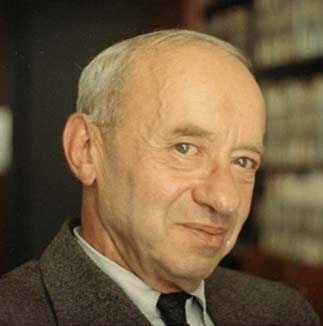
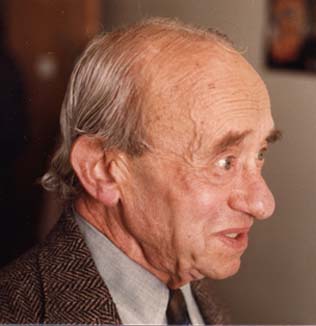
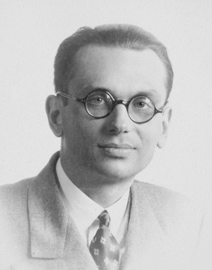
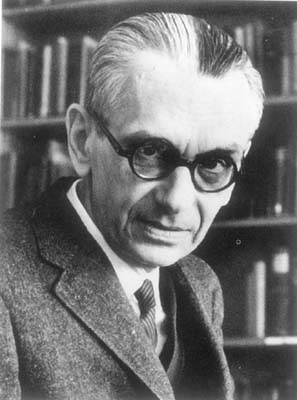
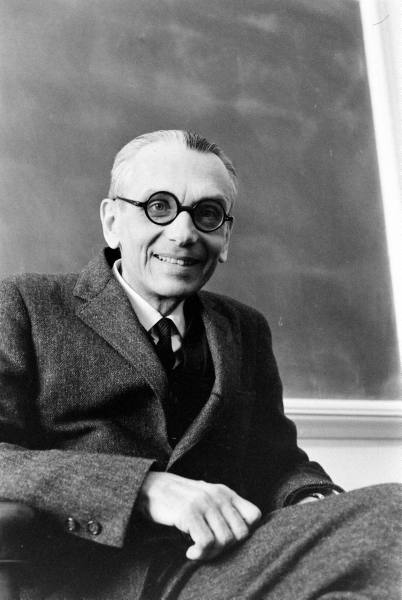
Kurt Friedrich Gödel (April 28, 1906 – January 14, 1978) was an Austrian American logician, mathematician and philosopher. Later in his life he emigrated to the United States to escape the effects of World War II. One of the most significant logicians of all time, Gödel made an immense impact upon scientific and philosophical thinking in the 20th century, a time when many, such as Bertrand Russell, A.N. Whitehead and David Hilbert, were pioneering the use of logic and set theory to understand the foundations of mathematics.
Gödel is best known for his two incompleteness theorems, published in 1931 when he was 25 years old, one year after finishing his doctorate at the University of Vienna. The more famous incompleteness theorem states that for any self - consistent recursive axiomatic system powerful enough to describe the arithmetic of the natural numbers (for example Peano arithmetic), there are true propositions about the naturals that cannot be proved from the axioms. To prove this theorem, Gödel developed a technique now known as Gödel numbering, which codes formal expressions as natural numbers.
He also showed that neither the axiom of choice nor the continuum hypothesis can be disproved from the accepted axioms of set theory, assuming these axioms are consistent. The former result opened the door for "working mathematicians" to assume the axiom of choice in their proofs. There are many important results whose only known proofs use the axiom of choice, which is equivalent to Zorn's lemma. He also made important contributions to proof theory by clarifying the connections between classical logic, intuitionistic logic and modal logic.
Gödel was born April 28, 1906, in Brno, Austria - Hungary into the ethnic German family of Rudolf Gödel, the manager of a textile factory, and Marianne Gödel (born Handschuh). At the time of his birth the city had a slight German speaking majority, and this was the language of his parents. The ancestors of Kurt Gödel were often active in Brno's cultural life. For example, his grandfather Joseph Gödel was a famous singer of that time and for some years a member of the "Brünner Männergesangverein".
Although he spoke very little Czech himself, Gödel automatically became a Czechoslovakian citizen at age 12 when the Austro - Hungarian empire broke up at the end of World War I. According to his classmate Klepetař, "Gödel considered himself always Austrian and an exile in Czechoslovakia" ("ein Österreicher im Exil in der Tschechoslowakei") during this time. He chose to become an Austrian citizen at age 23. When Nazi Germany annexed Austria, Gödel automatically became a German citizen at age 32. After World War II, at the age of 42, he became an American citizen.
In his family, young Kurt was known as Herr Warum ("Mr. Why") because of his insatiable curiosity. According to his brother Rudolf, at the age of six or seven Kurt suffered from rheumatic fever; he completely recovered, but for the rest of his life he remained convinced that his heart had suffered permanent damage.
Gödel attended the Evangelische Volksschule, a Lutheran school in Brno from 1912 to 1916, and was enrolled in the Deutsches Staats - Realgymnasium from 1916 to 1924, excelling with honors in all his subjects, particularly in mathematics, languages and religion. Although Kurt had first excelled in languages, he later became more interested in history and mathematics. His interest in mathematics increased when in 1920 his older brother Rudolf (born 1902) left for Vienna to go to medical school at the University of Vienna. During his teens, Kurt studied Gabelsberger shorthand, Goethe's Theory of Colours and criticisms of Isaac Newton, and the writings of Immanuel Kant.
At the age of 18, Gödel joined his brother in Vienna and entered the University of Vienna. By that time, he had already mastered university level mathematics. Although initially intending to study theoretical physics, he also attended courses on mathematics and philosophy. During this time, he adopted ideas of mathematical realism. He read Kant's Metaphysische Anfangsgründe der Naturwissenschaft, and participated in the Vienna Circle with Moritz Schlick, Hans Hahn and Rudolf Carnap. Gödel then studied number theory, but when he took part in a seminar run by Moritz Schlick which studied Bertrand Russell's book Introduction to Mathematical Philosophy, he became interested in mathematical logic. According to Gödel mathematical logic was "a science prior to all others, which contains the ideas and principles underlying all sciences."
Attending a lecture by David Hilbert in Bologna on completeness and consistency of mathematical systems may have set Gödel's life course. In 1928, Hilbert and Wilhelm Ackermann published Grundzüge der theoretischen Logik (Principles of Mathematical Logic), an introduction to first - order logic in which the problem of completeness was posed: Are the axioms of a formal system sufficient to derive every statement that is true in all models of the system?
This was the topic chosen by Gödel for his doctorate work. In 1929, at the age of 23, he completed his doctoral dissertation under Hans Hahn's supervision. In it, he established the completeness of the first - order predicate calculus (Gödel's completeness theorem). He was awarded his doctorate in 1930. His thesis, along with some additional work, was published by the Vienna Academy of Science.
In 1931 and while still in Vienna, Gödel published his incompleteness theorems in Über formal unentscheidbare Sätze der "Principia Mathematica" und verwandter Systeme (called in English "On Formally Undecidable Propositions of "Principia Mathematica" and Related Systems"). In that article, he proved for any computable axiomatic system that is powerful enough to describe the arithmetic of the natural numbers (e.g., the Peano axioms or Zermelo – Fraenkel set theory with the axiom of choice), that:
- If the system is consistent, it cannot be complete.
- The consistency of the axioms cannot be proven within the system.
These theorems ended a half century of attempts, beginning with the work of Frege and culminating in Principia Mathematica and Hilbert's formalism, to find a set of axioms sufficient for all mathematics. The incompleteness theorems also imply that not all mathematical questions are computable.
In hindsight, the basic idea at the heart of the incompleteness theorem is rather simple. Gödel essentially constructed a formula that claims that it is unprovable in a given formal system. If it were provable, it would be false, which contradicts the idea that in a consistent system, provable statements are always true. Thus there will always be at least one true but unprovable statement. That is, for any computably enumerable set of axioms for arithmetic (that is, a set that can in principle be printed out by an idealized computer with unlimited resources), there is a formula that obtains in arithmetic, but which is not provable in that system. To make this precise, however, Gödel needed to produce a method to encode statements, proofs, and the concept of provability as natural numbers. He did this using a process known as Gödel numbering.
In his two page paper Zum intuitionistischen Aussagenkalkül (1932) Gödel refuted the finite - valuedness of intuitionistic logic. In the proof he implicitly used what has later become known as Gödel – Dummett intermediate logic (or Gödel fuzzy logic).
Gödel earned his habilitation at Vienna in 1932, and in 1933 he became a Privatdozent (unpaid lecturer) there. In 1933 Adolf Hitler came to power in Germany and over the following years the Nazis rose in influence in Austria, and among Vienna's mathematicians. In June 1936, Moritz Schlick, whose seminar had aroused Gödel's interest in logic, was assassinated by a pro - Nazi student. This triggered "a severe nervous crisis" in Gödel. He developed paranoid symptoms, including a fear of being poisoned, and spent several months in a sanitarium for nervous diseases.
In 1933, Gödel first traveled to the U.S., where he met Albert Einstein, who became a good friend. He delivered an address to the annual meeting of the American Mathematical Society. During this year, Gödel also developed the ideas of computability and recursive functions to the point where he delivered a lecture on general recursive functions and the concept of truth. This work was developed in number theory, using Gödel numbering.
In 1934 Gödel gave a series of lectures at the Institute for Advanced Study (IAS) in Princeton, New Jersey, entitled On undecidable propositions of formal mathematical systems. Stephen Kleene, who had just completed his PhD at Princeton, took notes of these lectures which have been subsequently published.
Gödel would visit the IAS again in the autumn of 1935. The traveling and the hard work had exhausted him, and the next year he took a break to recover from a depressive episode. He returned to teaching in 1937. During this time, he worked on the proof of consistency of the axiom of choice and of the continuum hypothesis; he would go on to show that these hypotheses cannot be disproved from the common system of axioms of set theory.
He married Adele Nimbursky (née Porkert, 1899 – 1981), whom he had known for over 10 years, on September 20, 1938. Their relationship had been opposed by his parents on the grounds that she was a divorced dancer, six years older than he was.
Subsequently, he left for another visit to the USA, spending the autumn of 1938 at the IAS and the spring of 1939 at the University of Notre Dame.
Gödel and his wife Adele spent the summer of 1942 in Blue Hill, Maine, in the Blue Hill Inn at the top of the bay. Gödel was not merely vacationing but had a very productive summer of work. Using Heft 15 [volume 15] of Gödel's still unpublished Arbeitshefte [working notebooks], John W. Dawson, Jr., conjectures that Gödel discovered a proof for the independence of the axiom of choice from finite type theory, a weakened form of set theory, while in Blue Hill in 1942. Gödel's close friend Hao Wang supports this conjecture, noting that Gödel's Blue Hill notebooks contain his most extensive treatment of the problem.
After the Anschluss in 1938, Austria had become a part of Nazi Germany. Germany abolished the title of Privatdozent, so Gödel had to apply for a different position under the new order. His former association with Jewish members of the Vienna Circle, especially with Hahn, weighed against him. The University of Vienna turned his application down. His predicament intensified when the German army found him fit for conscription. World War II started in September 1939. Before the year was up, Gödel and his wife left Vienna for Princeton. To avoid the difficulty of an Atlantic crossing, the Gödels took the trans - Siberian railway to the Pacific, sailed from Japan to San Francisco (which they reached on March 4, 1940), then crossed the U.S. by train to Princeton, where Gödel would accept a position at the Institute for Advanced Study (IAS).
Gödel very quickly resumed his mathematical work. In 1940, he published his work Consistency of the axiom of choice and of the generalized continuum - hypothesis with the axioms of set theory which is a classic of modern mathematics. In that work he introduced the constructible universe, a model of set theory in which the only sets that exist are those that can be constructed from simpler sets. Gödel showed that both the axiom of choice (AC) and the generalized continuum hypothesis (GCH) are true in the constructible universe, and therefore must be consistent with the Zermelo – Fraenkel axioms for set theory (ZF). Paul Cohen later constructed a model of ZF in which AC and GCH are false; together these proofs mean that AC and GCH are independent of the ZF axioms for set theory.
Albert Einstein was also living at Princeton during this time. Gödel and Einstein subsequently developed a strong friendship, and were known to take long walks together to and from the Institute for Advanced Study. The nature of their conversations was a mystery to the other Institute members. Economist Oskar Morgenstern recounts that toward the end of his life Einstein confided that his "own work no longer meant much, that he came to the Institute merely... to have the privilege of walking home with Gödel".
On December 5, 1947, Einstein and Morgenstern accompanied Gödel to his U.S. citizenship exam, where they acted as witnesses. Gödel had confided in them that he had discovered an inconsistency in the U.S. Constitution, one that would allow the U.S. to become a dictatorship. Einstein and Morgenstern were concerned that their friend's unpredictable behavior might jeopardize his chances. Fortunately, the judge turned out to be Phillip Forman. Forman knew Einstein and had administered the oath at Einstein's own citizenship hearing. Everything went smoothly until Forman happened to ask Gödel if he thought a dictatorship like the Nazi regime could happen in the U.S. Gödel then started to explain his discovery to Forman. Forman understood what was going on, cut Gödel off, and moved the hearing on to other questions and a routine conclusion.
Gödel became a permanent member of the Institute of Advanced Study at Princeton in 1946. Around this time he stopped publishing, though he continued to work. He became a full professor at the Institute in 1953 and an emeritus professor in 1976.
In 1951, Gödel demonstrated the existence of paradoxical solutions to Albert Einstein's field equations in general relativity. He gave this elaboration to Einstein as a present for his 70th birthday. These "rotating universes" would allow time travel and caused Einstein to have doubts about his own theory. His solutions are known as the Gödel metric.
During his many years at the Institute, Gödel's interests turned to philosophy and physics. He studied and admired the works of Gottfried Leibniz, but came to believe that a hostile conspiracy had caused some of Leibniz's works to be suppressed. To a lesser extent he studied Immanuel Kant and Edmund Husserl. In the early 1970s, Gödel circulated among his friends an elaboration of Leibniz's version of Anselm of Canterbury's ontological proof of God's existence. This is now known as Gödel's ontological proof. Gödel was awarded (with Julian Schwinger) the first Albert Einstein Award in 1951, and was also awarded the National Medal of Science, in 1974.
In later life, Gödel suffered periods of mental instability and illness. He had an obsessive fear of being poisoned; he would eat only food that his wife, Adele, prepared for him. Late in 1977, Adele was hospitalized for six months and could no longer prepare Gödel's food. In her absence, he refused to eat, eventually starving to death. He weighed 65 pounds (approximately 30 kg) when he died. His death certificate reported that he died of "malnutrition and inanition caused by personality disturbance" in Princeton Hospital on January 14, 1978.
Gödel was a convinced theist. He rejected the notion of others like his friend Albert Einstein that God was impersonal.
He believed firmly in an afterlife, stating: "Of course this supposes that there are many relationships which today's science and received wisdom haven't any inkling of. But I am convinced of this [the afterlife], independently of any theology." It is "possible today to perceive, by pure reasoning" that it "is entirely consistent with known facts." "If the world [Welt] is rationally constructed and has meaning, then there must be such a thing [as an afterlife]."
In an unmailed answer to a questionnaire, Gödel described his religion as "baptized Lutheran (but not member of any religious congregation). My belief is theistic, not pantheistic, following Leibniz rather than Spinoza."
He said about Islam: "I like Islam: it is a consistent [or consequential] idea of religion and open - minded".
The Kurt Gödel Society, founded in 1987, was named in his honor. It is an international organization for the promotion of research in the areas of logic, philosophy and the history of mathematics. The University of Vienna hosts the Kurt Gödel Research Center for Mathematical Logic. The Association of Symbolic Logic has invited an annual Kurt Gödel lecture each year since 1990.
Five volumes of Gödel's collected works have been published. The first two include Gödel's publications; the third includes unpublished manuscripts from Gödel's Nachlass, and the final two include correspondence.
A biography of Gödel was published by John Dawson in 2005. Gödel was also one of four mathematicians examined in the 2008 BBC documentary entitled "Dangerous Knowledge".
Douglas Hofstadter wrote a popular book in 1979 called Gödel, Escher, Bach: An Eternal Golden Braid to celebrate the work and ideas of Gödel, along with those of artist M.C. Escher and composer Johann Sebastian Bach. The book partly explores the ramifications of the fact that Gödel's incompleteness theorem can be applied to any Turing - complete computational system, which may include the human brain.
